Abstract
The nation's supply of family physicians as estimated by the Graduate Medical Education National Advisory Committee appears fairly accurate. At the same time, the demands for family physicians appear to be strong, partially because case-management systems recognize the cost-effectiveness and appropriate training of family physicians for their needs. The largest factor inhibiting the supply of such physicians appears to be the relatively lower income of family practice compared to other specialty fields. This creates more difficulties in funding training positions and may limit the attractiveness of the field to medical school graduates.
Full text
PDF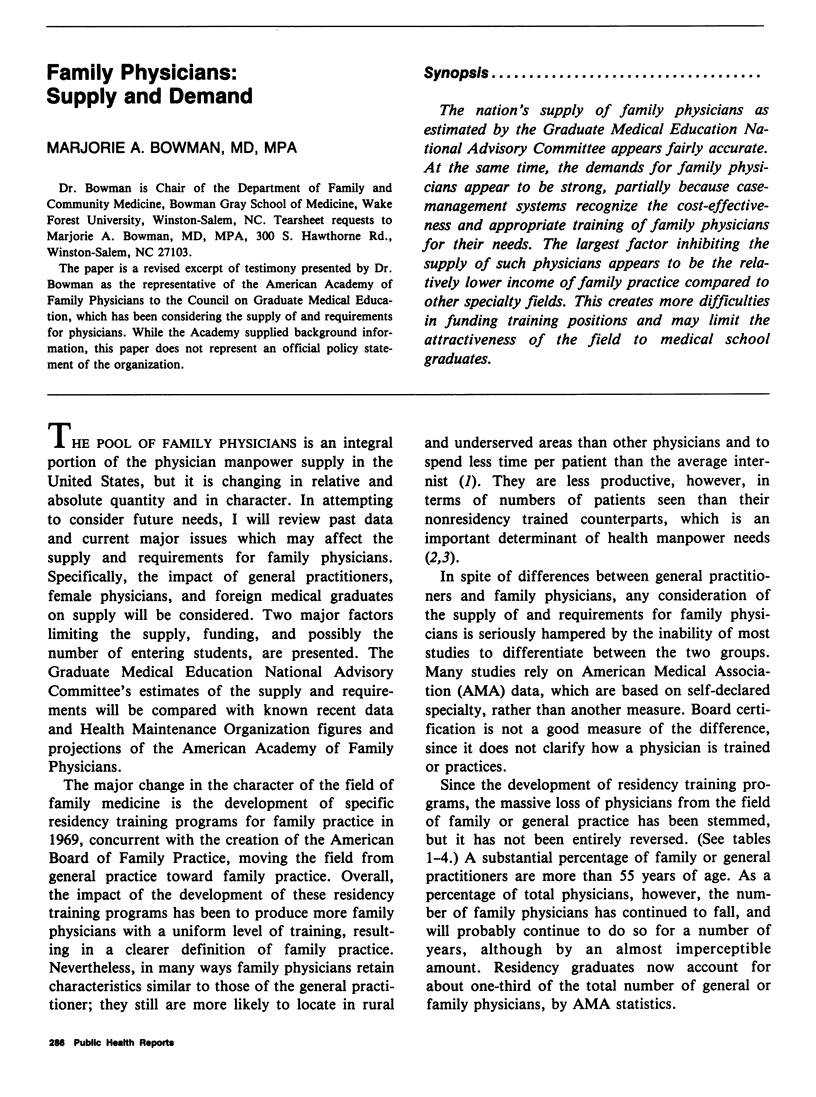
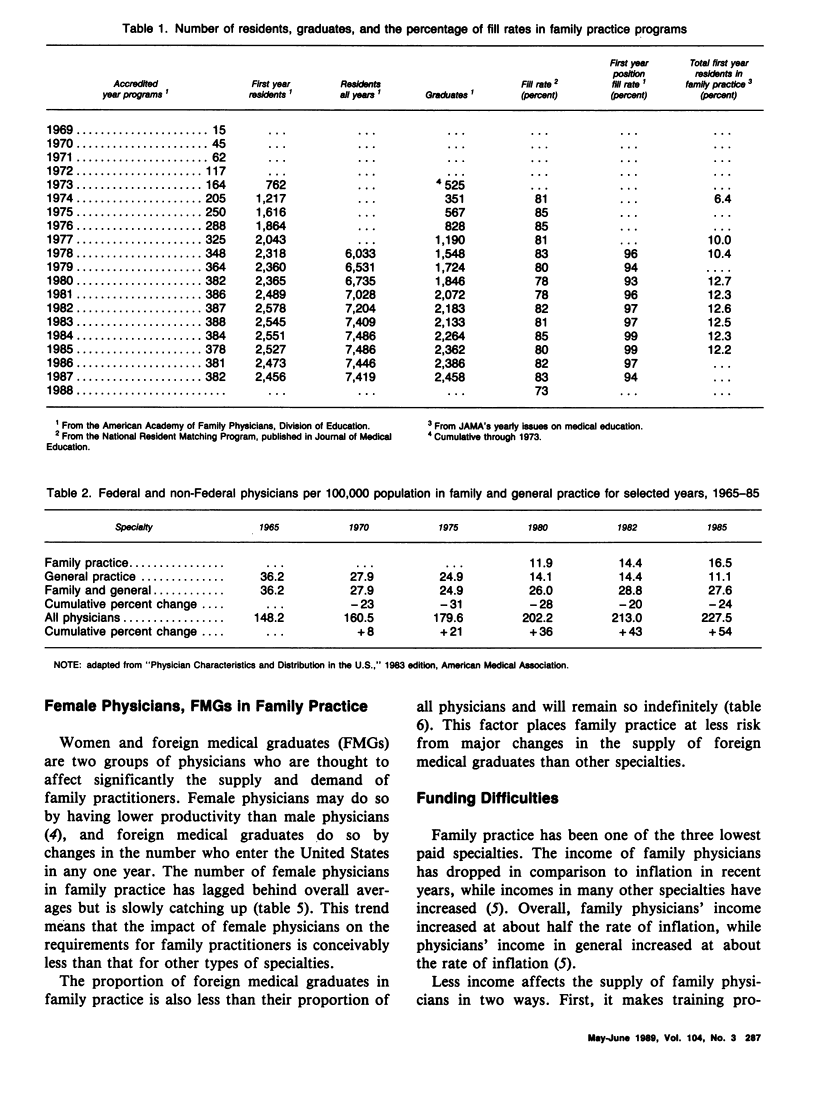
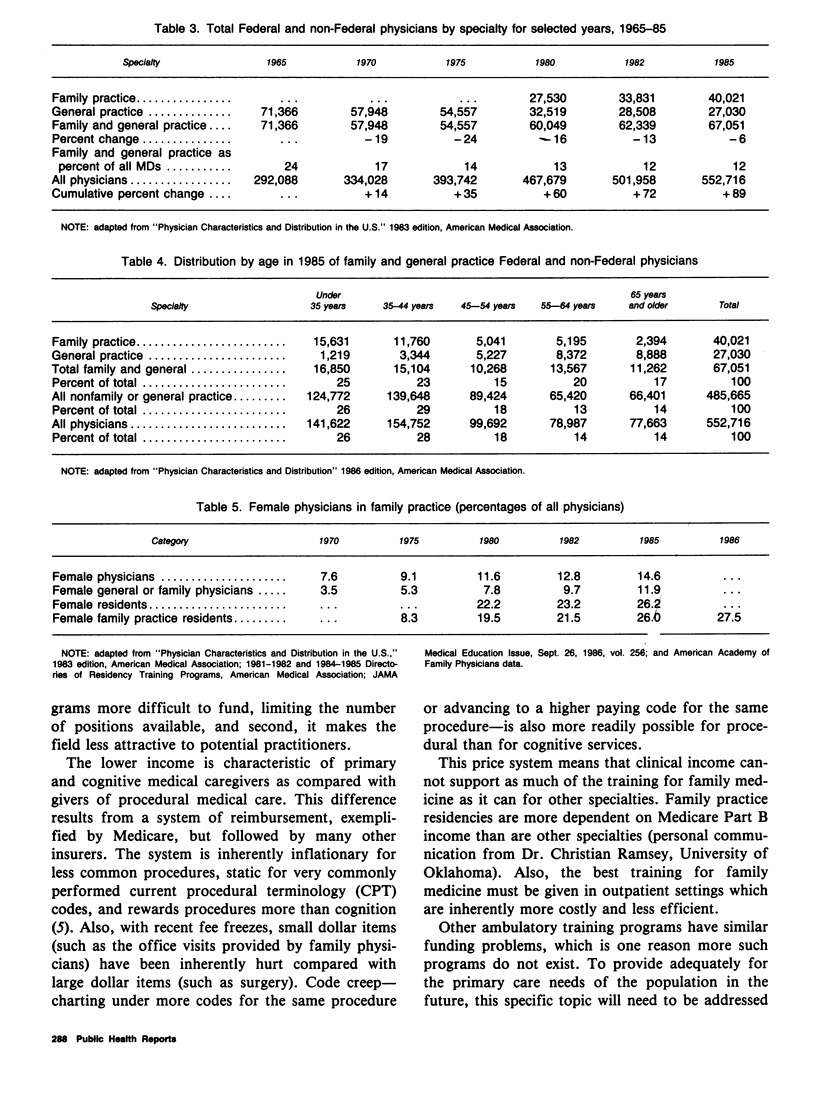
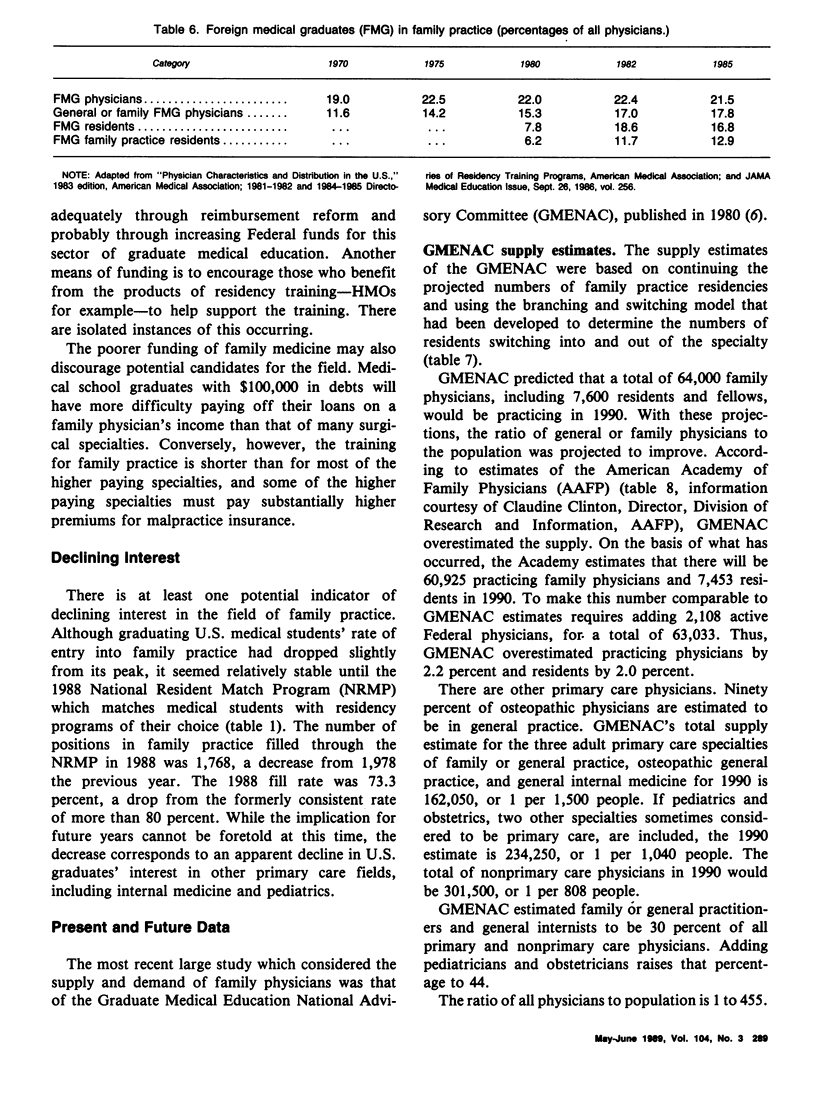
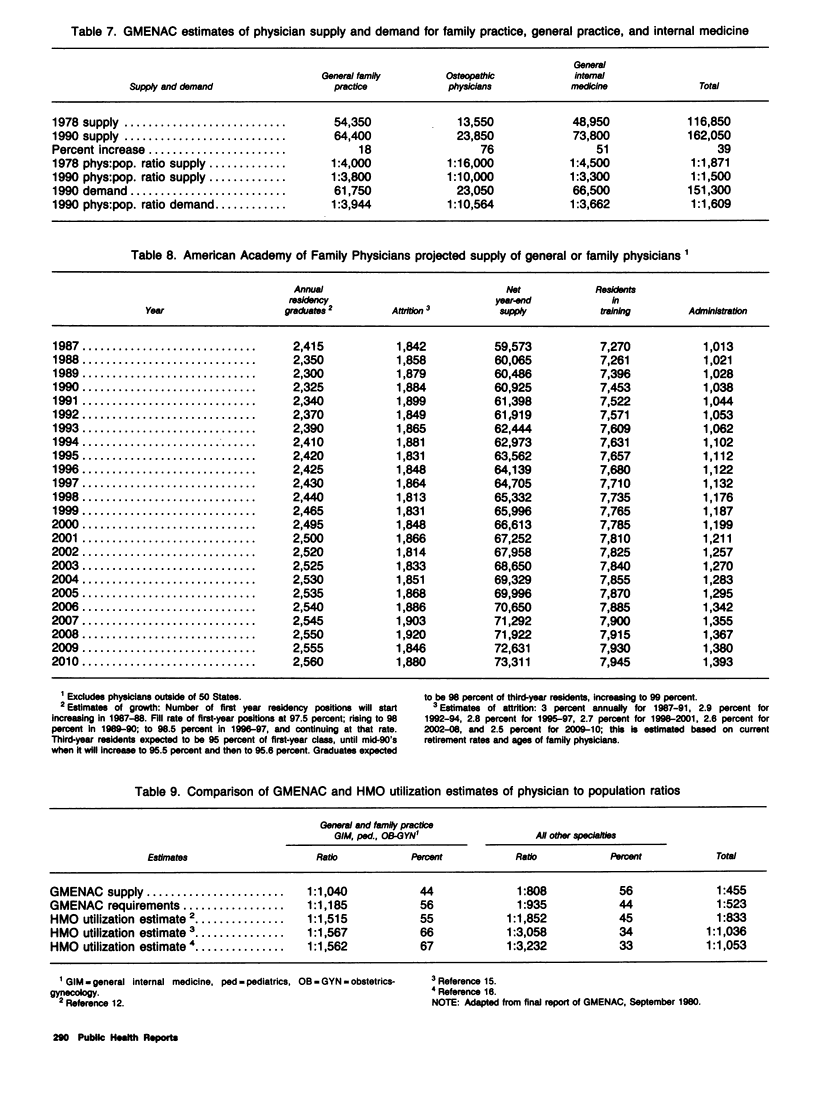
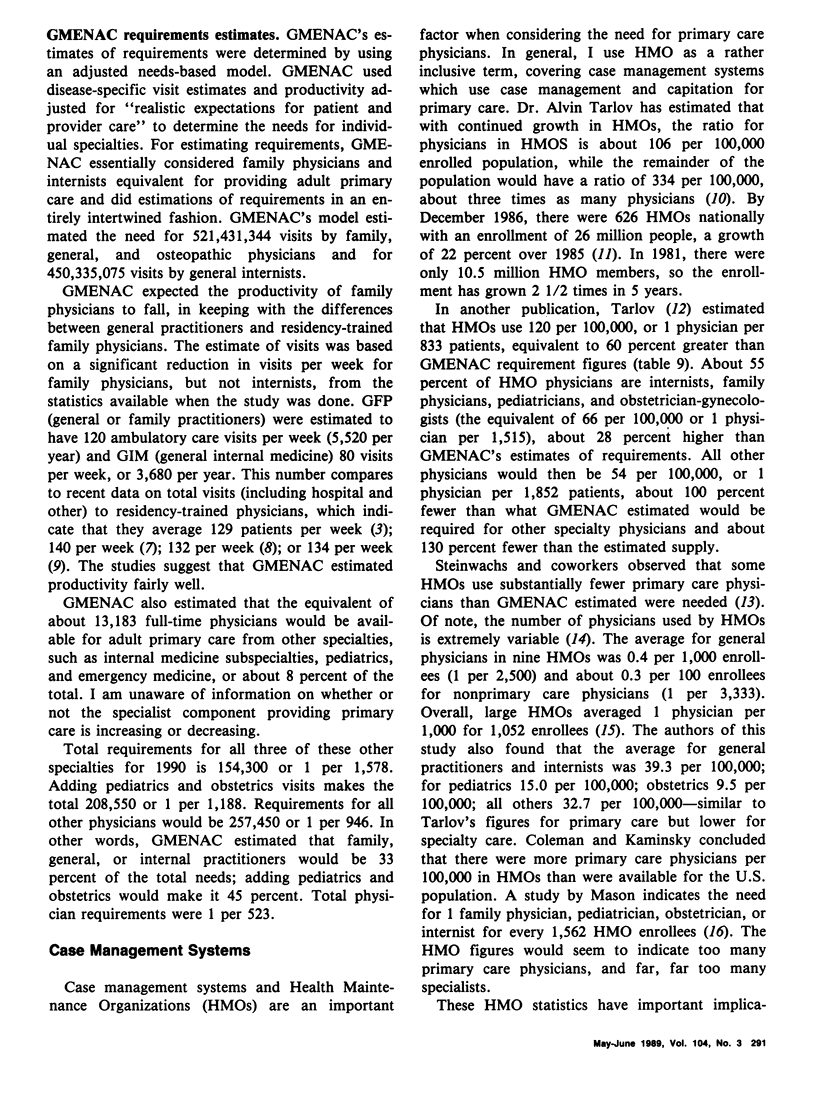
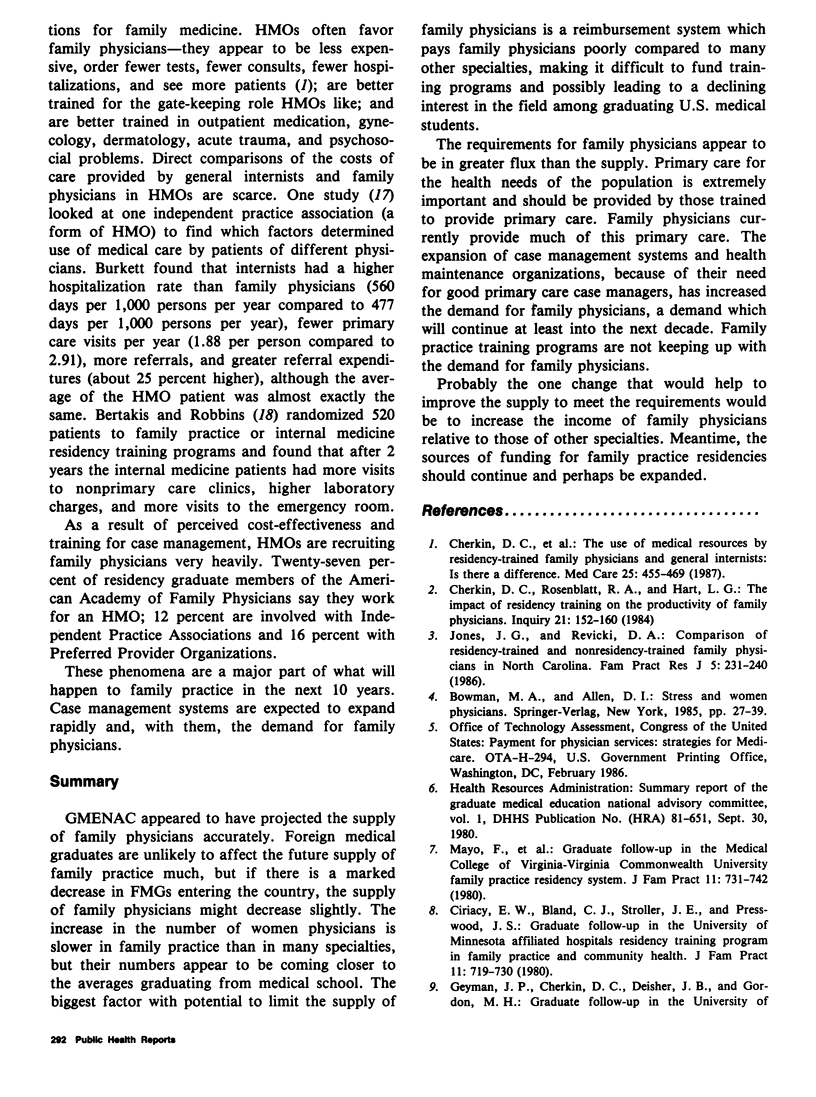
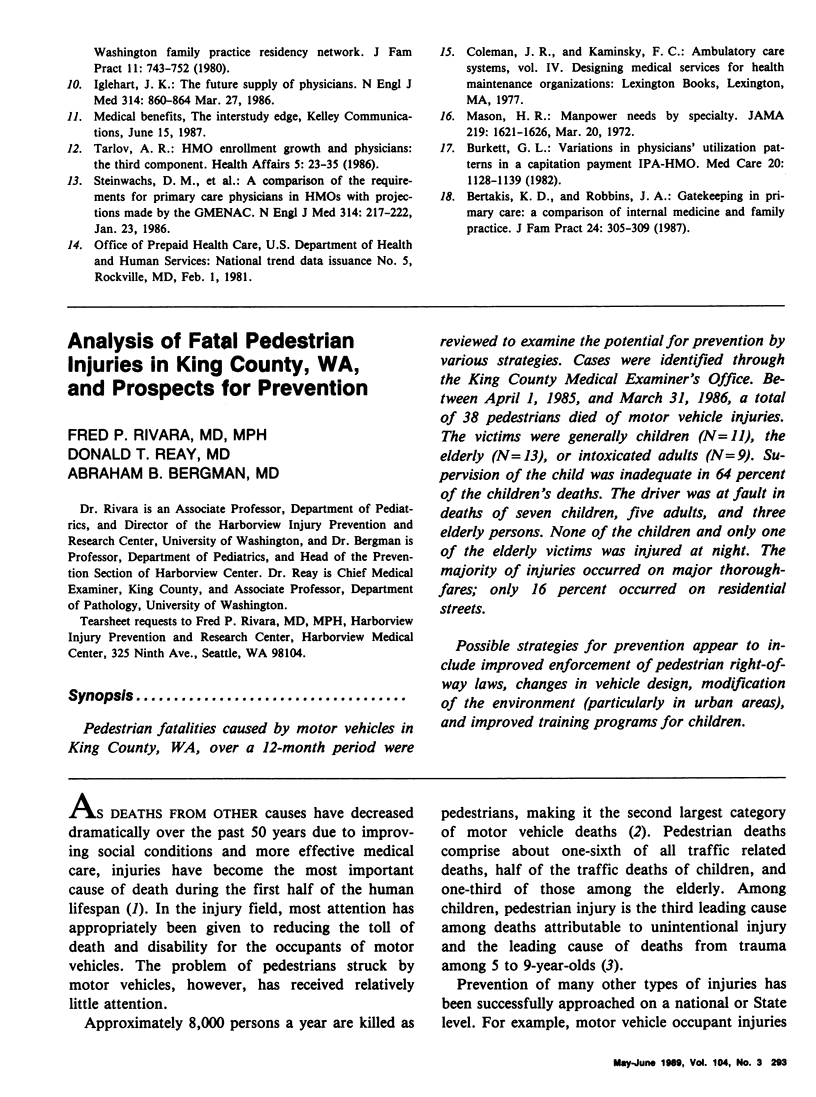
Selected References
These references are in PubMed. This may not be the complete list of references from this article.
- Bertakis K. D., Robbins J. A. Gatekeeping in primary care: a comparison of internal medicine and family practice. J Fam Pract. 1987 Mar;24(3):305–309. [PubMed] [Google Scholar]
- Burkett G. L. Variations in physician utilization patterns in a capitation payment IPA-HMO. Med Care. 1982 Nov;20(11):1128–1139. doi: 10.1097/00005650-198211000-00007. [DOI] [PubMed] [Google Scholar]
- Cherkin D. C., Rosenblatt R. A., Hart L. G., Schneeweiss R., LoGerfo J. The use of medical resources by residency-trained family physicians and general internists. Is there a difference? Med Care. 1987 Jun;25(6):455–469. doi: 10.1097/00005650-198706000-00001. [DOI] [PubMed] [Google Scholar]
- Cherkin D. C., Rosenblatt R. A., Hart L. G. The impact of residency training on the productivity of family physicians. Inquiry. 1984 Summer;21(2):152–160. [PubMed] [Google Scholar]
- Ciriacy E. W., Bland C. J., Stoller J. E., Prestwood J. S. Graduate follow-up in the University of Minnesota affiliated hospitals residency training program in family practice and community health. J Fam Pract. 1980 Nov;11(5):719–730. [PubMed] [Google Scholar]
- Geyman J. P., Cherkin D. C., Deisher J. B., Gordon M. J. Graduate follow-up in the University of Washington family practice residency network. J Fam Pract. 1980 Nov;11(5):743–752. [PubMed] [Google Scholar]
- Iglehart J. K. The future supply of physicians. N Engl J Med. 1986 Mar 27;314(13):860–864. doi: 10.1056/NEJM198603273141327. [DOI] [PubMed] [Google Scholar]
- Jones J. G., Revicki D. A. Comparison of residency-trained and nonresidency-trained family physicians in North Carolina. Fam Pract Res J. 1986 Summer;5(4):231–240. [PubMed] [Google Scholar]
- Mason H. R. Manpower needs by specialty. JAMA. 1972 Mar 20;219(12):1621–1626. [PubMed] [Google Scholar]
- Mayo F., Wood M., Marsland D. W., Jacoby K. E., White S. B. Graduate follow-up in the Medical College of Virginia/Virginia Commonwealth University family practice residency system. J Fam Pract. 1980 Nov;11(5):731–742. [PubMed] [Google Scholar]
- Steinwachs D. M., Weiner J. P., Shapiro S., Batalden P., Coltin K., Wasserman F. A comparison of the requirements for primary care physicians in HMOs with projections made by the GMENAC. N Engl J Med. 1986 Jan 23;314(4):217–222. doi: 10.1056/NEJM198601233140406. [DOI] [PubMed] [Google Scholar]
- Tarlov A. R. HMO enrollment growth and physicians: the third compartment. Health Aff (Millwood) 1986 Spring;5(1):23–35. doi: 10.1377/hlthaff.5.1.23. [DOI] [PubMed] [Google Scholar]


